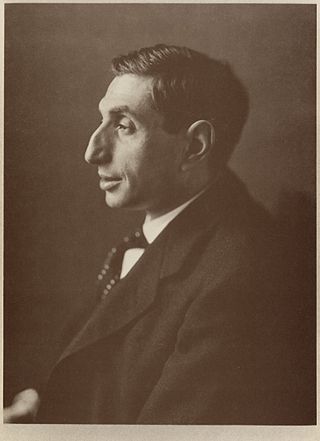Related Research Articles
Events from the year 1912 in art.
Events from the year 1910 in art.

Dutch art describes the history of visual arts in the Netherlands, after the United Provinces separated from Flanders. Earlier painting in the area is covered in Early Netherlandish painting and Dutch and Flemish Renaissance painting.
The "Sonderbund" — as it is normally called; its complete name being Sonderbund westdeutscher Kunstfreunde und Künstler, and also known as Sonderbund group — was a "special union" of artists and art lovers, established 1909 in Düsseldorf and dissolved in 1916. In its first years, the Sonderbund mounted some landmark exhibitions, successfully introducing French Impressionist, Post-Impressionist and Modern Art to the western parts of Germany.

Alfred Flechtheim was a German Jewish art dealer, art collector, journalist and publisher persecuted by the Nazis.

Carl Ernst "Karli" Sohn-Rethel German Modernist painter of the Düsseldorf school of painting art movement. He traveled often and was active in Düsseldorf, Munich, Rome, Positano, Paris, among other places. Sohn-Rethel was a member of the art groups, Sonderbund group and Young Rhineland.
Lea Vergine, born Lea Buoncristiano, was an Italian art critic, essayist and curator.
Max Silberberg was a major cultural figure in Breslau, a German Jewish entrepreneur, art collector and patron who was robbed and murdered by the Nazis. His art collection, among the finest of its era, has been the object of numerous restitution claims.
Max Creutz was a German art historian and curator of the Museum für Angewandte Kunst Köln and the Kaiser-Wilhelm-Museum in Krefeld where he worked from 1922 until his death. In Cologne, in 1914 he was instrumental in the first exhibition of the Deutscher Werkbund, Deutsche Werkbundausstellung. In Krefeld, he succeeded in acquiring modern art exhibits, including works by Max Ernst, Wassily Kandinsky, and Alexej von Jawlensky. He included a substantial collection of art, crafts and design from the Bauhaus.
Hugo Tutein Nolthenius was a Dutch industrialist and art collector.
Paul Schüler (1876-1942) was a German Jewish banker and art collector murdered in the Holocaust.
References
- ↑ Gillo Dorfles (2016). Capire l'arte 3. Dal Neoclassicismo a oggi. Atlas. p. 200.
- ↑ Giorgio Cricco (2021). Itinerario nell'arte 3. Zanichelli Editore. p. 213.
- ↑ Picasso, Pablo (1903), The Tragedy , retrieved 2023-12-09
- ↑ Sonderbund Westdeutscher Kunstfreunde und Künstler (1912). Internationale Kunstausstellung des Sonderbundes Westdeutscher Kunstfreunde und Künstler zu Cöln, 1912. Solomon R. Guggenheim Museum Library. Cöln a. Rhein : M. Dumont Schauberg.
- ↑ "Pablo Picasso, The Tragedy, 1903". nga.gov.
The invoice from Paul Rosenberg to Chester Dale incorrectly names the prior owner as Mr. Schubert, Bochum. Information regarding Paul Schüler's ownership was kindly provided by Stefan Koldehoff (copies in NGA curatorial files). The incorrect name on the Rosenberg invoice suggests that he did not acquire the painting directly from Schüler.